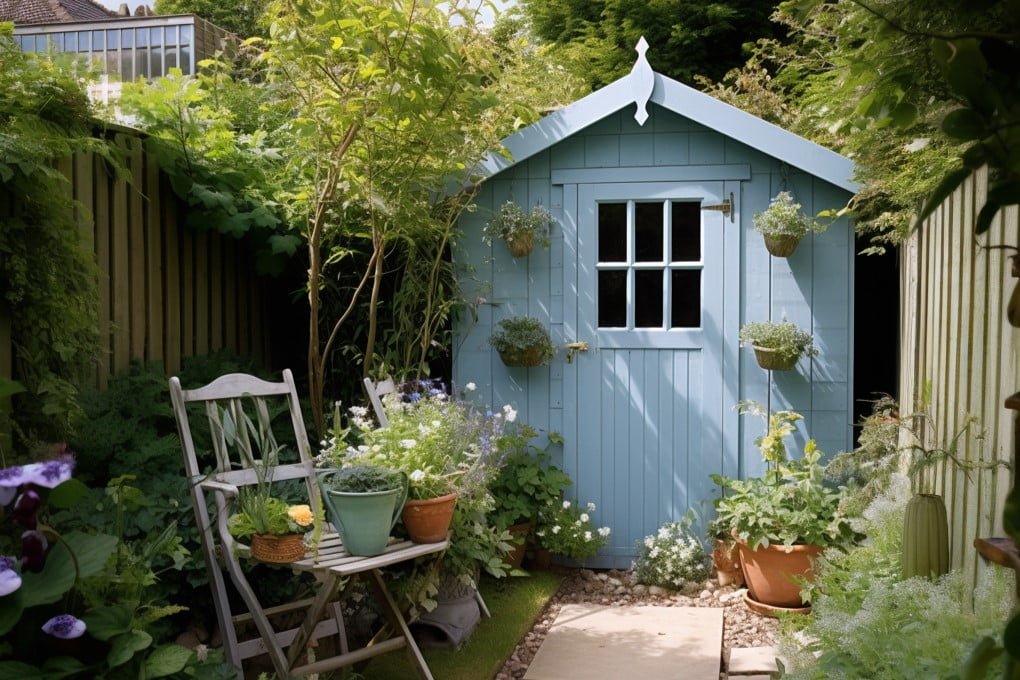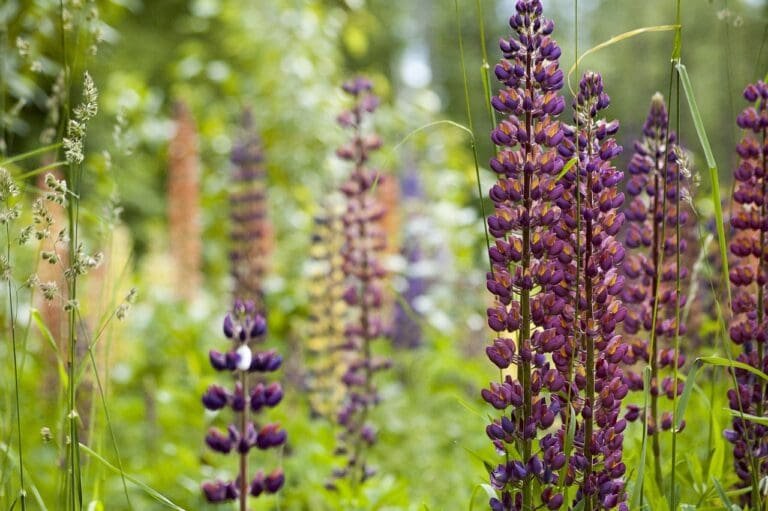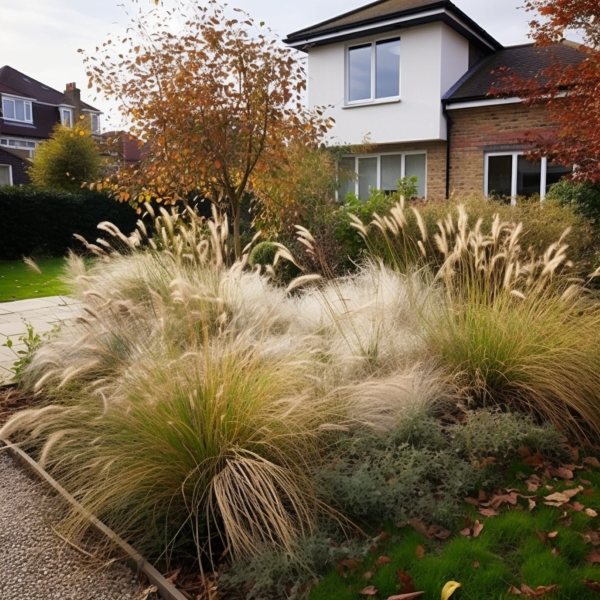What colour should I paint my garden shed? a question I’ve been asking myself for some time. This critical decision can make or break the aesthetic of your garden. Your humble shed has the power to create an oasis or an eyesore.
In this post, we’ll explore a range of different shed colours to help you select the perfect hue for your outdoor space. Here’s a summary of our top picks:
Affiliate Disclaimer: As an Amazon Associate, I earn from qualifying purchases.
| Shed Colour | Key Reasons to Choose | Our Top Pick |
|---|---|---|
| Grey | Sophisticated neutral colour to complement any garden style | Ronseal’s Slate |
| Blue | Provides an elegant accent for flowers and greenery | Ronseal’s Cornflower |
| Greens | Can be used to help blend your shed with it’s surroundings | Ronseal’s Willow |
| Black | Creates a striking modern touch that makes greenery pop | Ronseal’s Tudor Black Oak |
| White | A neutral backdrop highlighting vibrant gardens | Ronseal’s Daisy |
| Yellows | Creates a vibrant pop of colour, can help brighten shaded corners | Ronseal’s Sundial |
| Red / Brown | Traditional colour to offset garden plants and compliment wooden elements | Ronseal’s Medium Oak |
Factors to Consider When Picking Shed Paint
1. Consider Your Garden Style
When selecting a paint colour for your shed, it’s essential to align it with the overall aesthetic of your garden. For Wildflower Cottage Gardens, adorned with rambling flowers, it would be wise to opt for cool pastel tones like blue, pink, and green. These hues harmonize with the gentle planting style. For contemporary gardens boasting sleek lines and geometric shapes, consider introducing a vibrant pop of colour or creating a stark contrast using black.
In this garden above, you can appreciate the owner’s exquisite choice of a soft blue, perfectly complementing the gentle planting and embracing the garden’s traditional ambiance. The selected shade also forms a delightful connection with the greyish-blue flower pots, seamlessly integrating the shed into its surroundings, creating a harmonious sense of belonging.
2. Consider Your Shed Size
Another important consideration is the size of your garden shed. For larger sheds or those occupying a prominent space, opting for softer colours is a wise decision. Soft, neutral shades such as grey, almond, or even pale green can have a calming effect on the eyes. These hues play a crucial role in preventing large sheds from visually overpowering your garden, ensuring a more balanced and aesthetically pleasing landscape.
In this particular garden, the large shed takes centre stage in a prominent area. However, the savvy choice of Ronseal’s Slate proves to be a success, effectively softening the visual impact of the structure.
3. Consider Your Sheds Purpose
Considering the purpose of your shed is another key consideration when deciding on a paint shade. If your shed is going to be more than just a storage space for the lawnmower and serves as an outdoor studio or a relaxing craft area, opt for vibrant hues that mirror the creative energy within. An artist’s retreat, for example, will thrive with lively shades that evoke inspiration.
Sewing rooms or crafty nooks need to exude a cosy and inviting atmosphere. This could be achieved with delightful tones such as peach, buttercream, or sage green.
See how this cottage garden shed becomes a charming potting area, using upcycled items to create a beautiful space. The shed gets a fresh look with a soft turquoise shade and white accents, giving it a renewed and stylish appeal.
Top Tip: To seamlessly integrate your shed into your garden, connect the chosen colour with key flowers or other garden structures. This way, your shed becomes an integral part of the cohesive design.
Shed Colour Inspiration
Now, let’s turn our attention to your own outdoor haven and finding the perfect colour for your garden shed. Allow us to provide some inspiration. Here’s a brief overview of some of the trendiest choices for shed colours this year.
Classic White

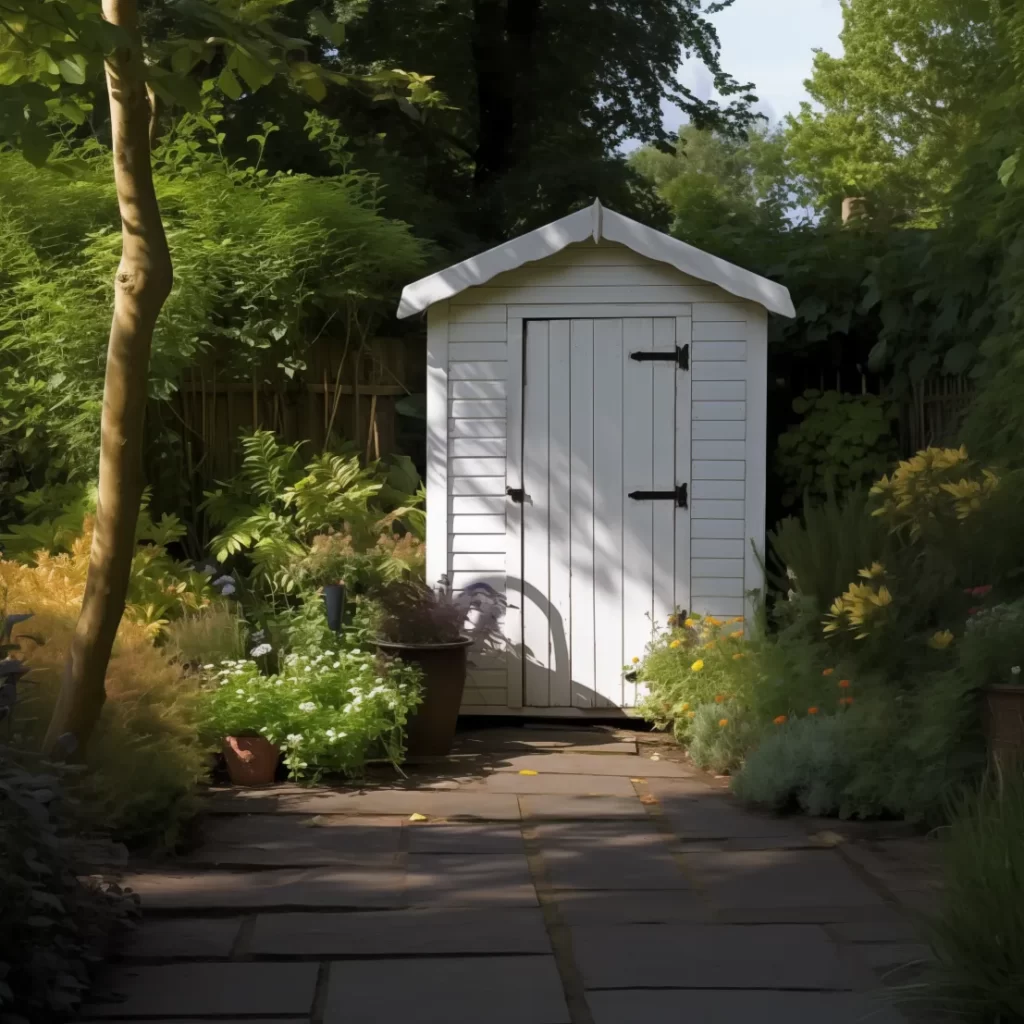
White allows your shed to serve as a neutral backdrop for vibrant gardens, or makes a crisp focal point against rich greens and earthy browns. For versatility, choose warm antique whites, clean bright whites or slightly blue-tinted whites. White also optimizes lighting inside garden sheds. Just know that white paint tends to fade faster than other pigmented exterior finishes unless routinely touched up. Ronseal’s White Ash is a lovely warm white, alternatively check out Daisy for a brighter finish.
Dramatic Black
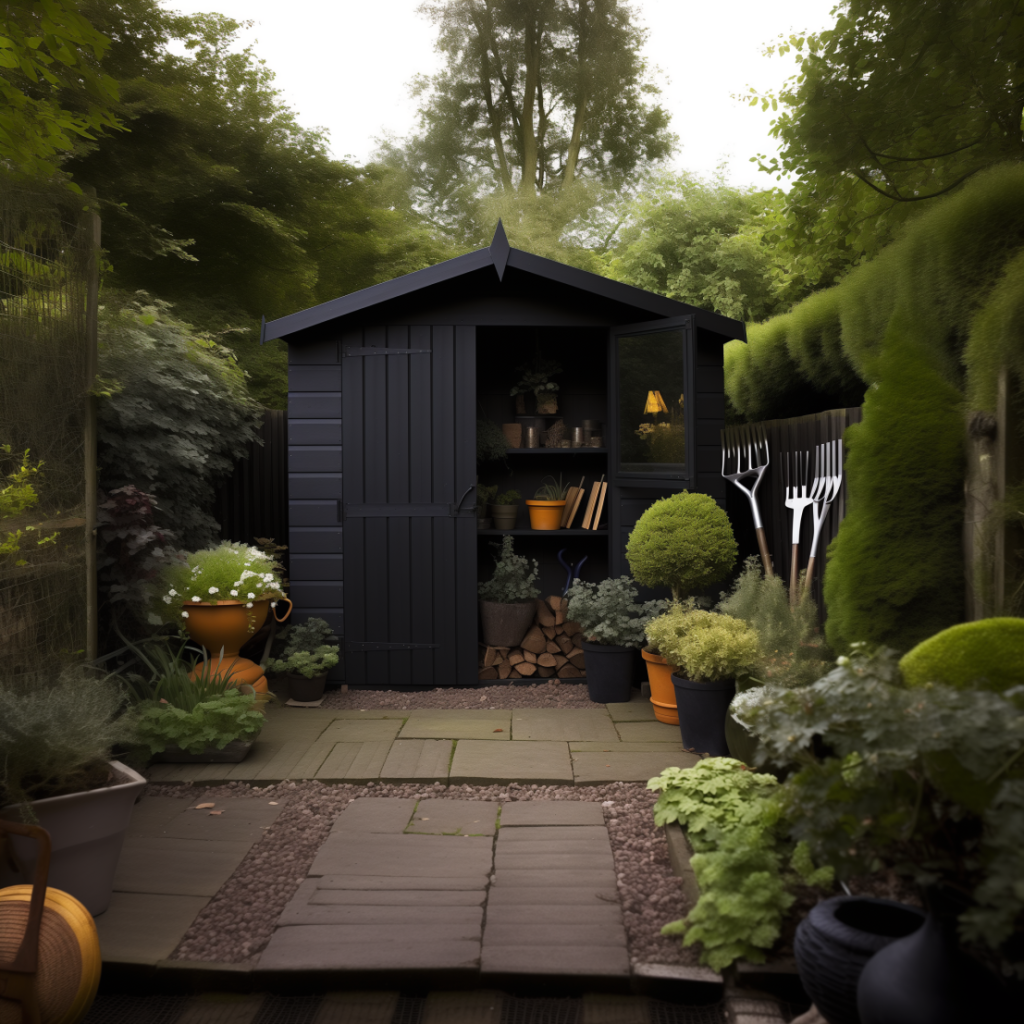
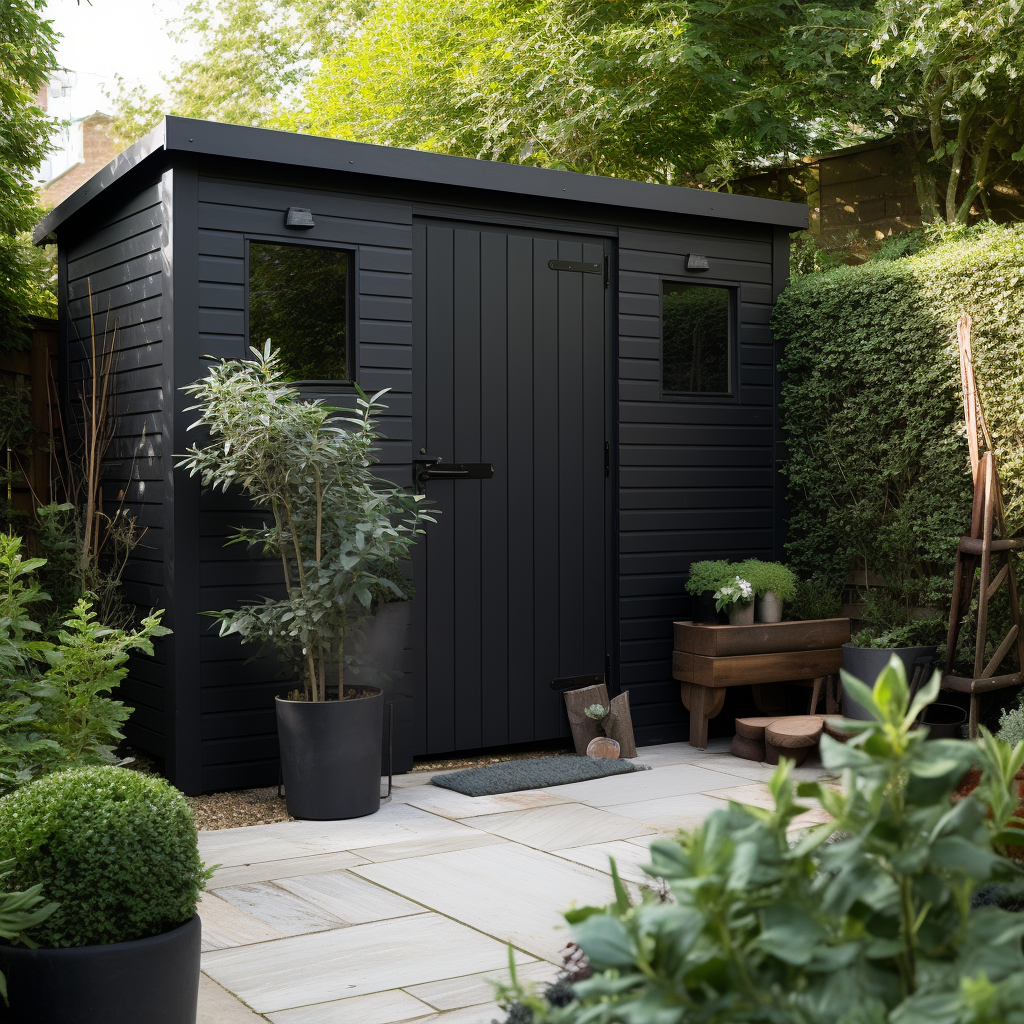
If you’re looking to create real visual drama in your garden, painting your shed deep charcoal or true black is guaranteed to grab attention. Black sheds elegantly fade into the background amid night gardens illuminated with strings of patio lights and tiki torches. Black complements gardens with a modern, sleek aesthetic, along with blooms and foliage in vibrant jewel tones. Just know black sheds absorb sunlight and heat up quickly compared to light reflective white sheds. Consider positioning black sheds in partly shaded spots or paint the roof vivid white to reduce solar heat absorption. Check out Ronseal’s Tudor Black Oak for a stunning black.
Soothing Greens
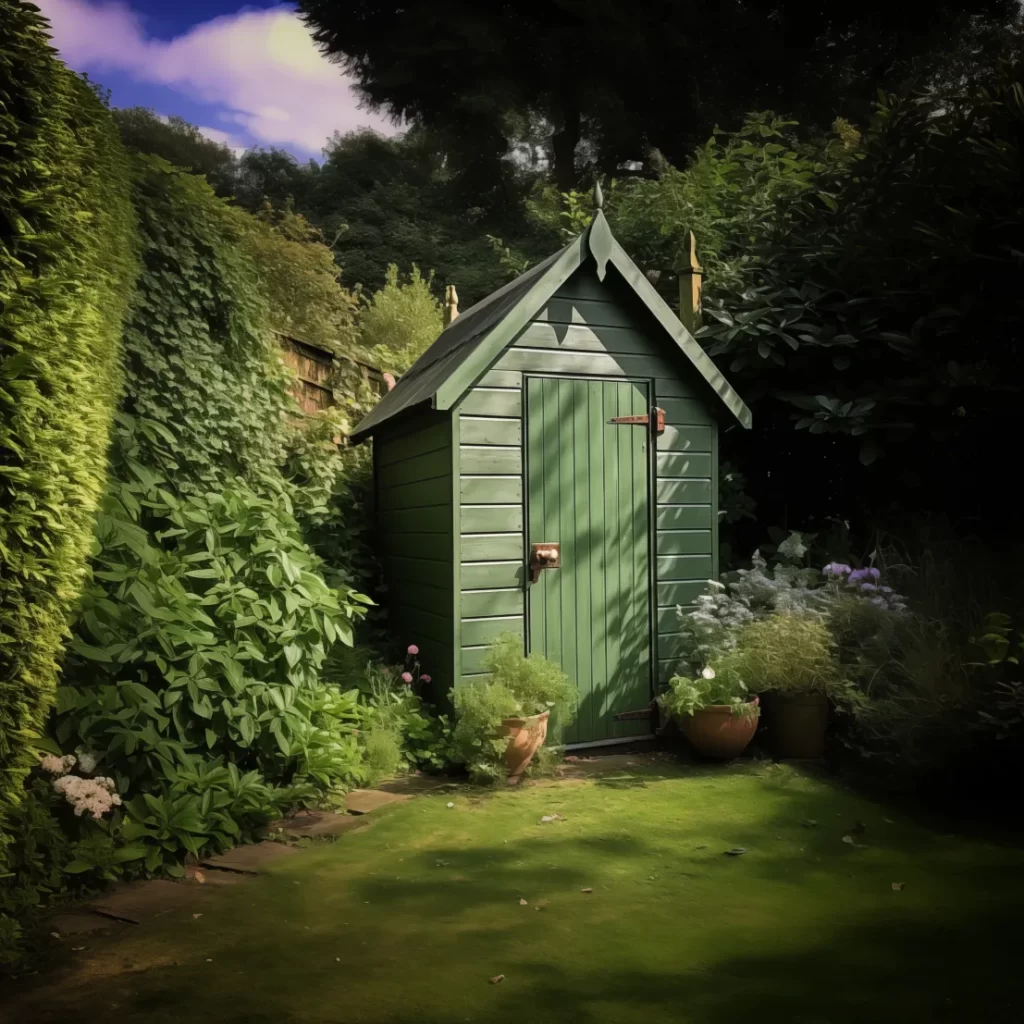
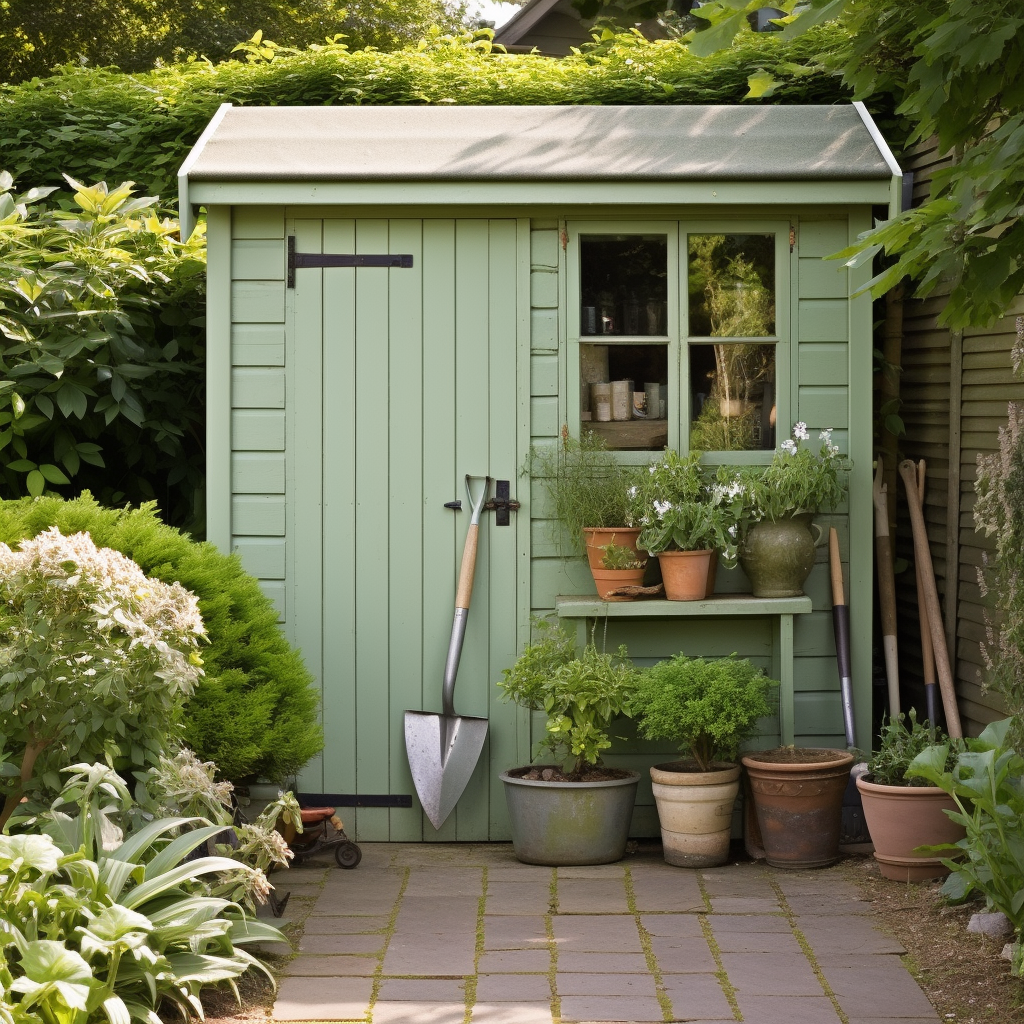
Green shades embody nature, renewal, and harmony in a garden setting. Opting for a mid-green can seamlessly blend your shed into the lush garden foliage, creating a subtle backdrop. On the other hand, choosing a vivid and brighter green can make your shed stand out, adding a vibrant contrast against blooming flowers. The versatility of green allows you to play with tones to achieve the desired visual effect in your garden. Some beautiful green shades includes Ronseal’s Sage and Forest Green.
Timeless Greys
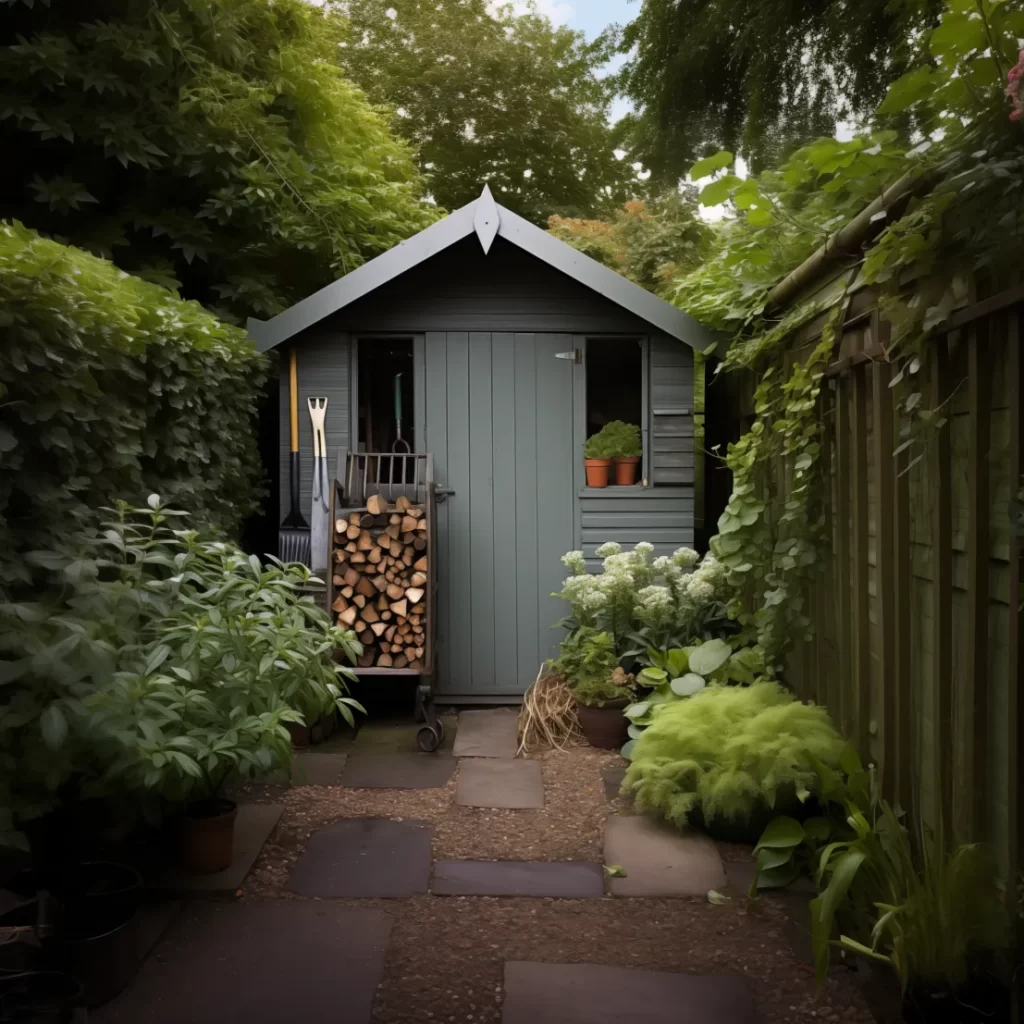
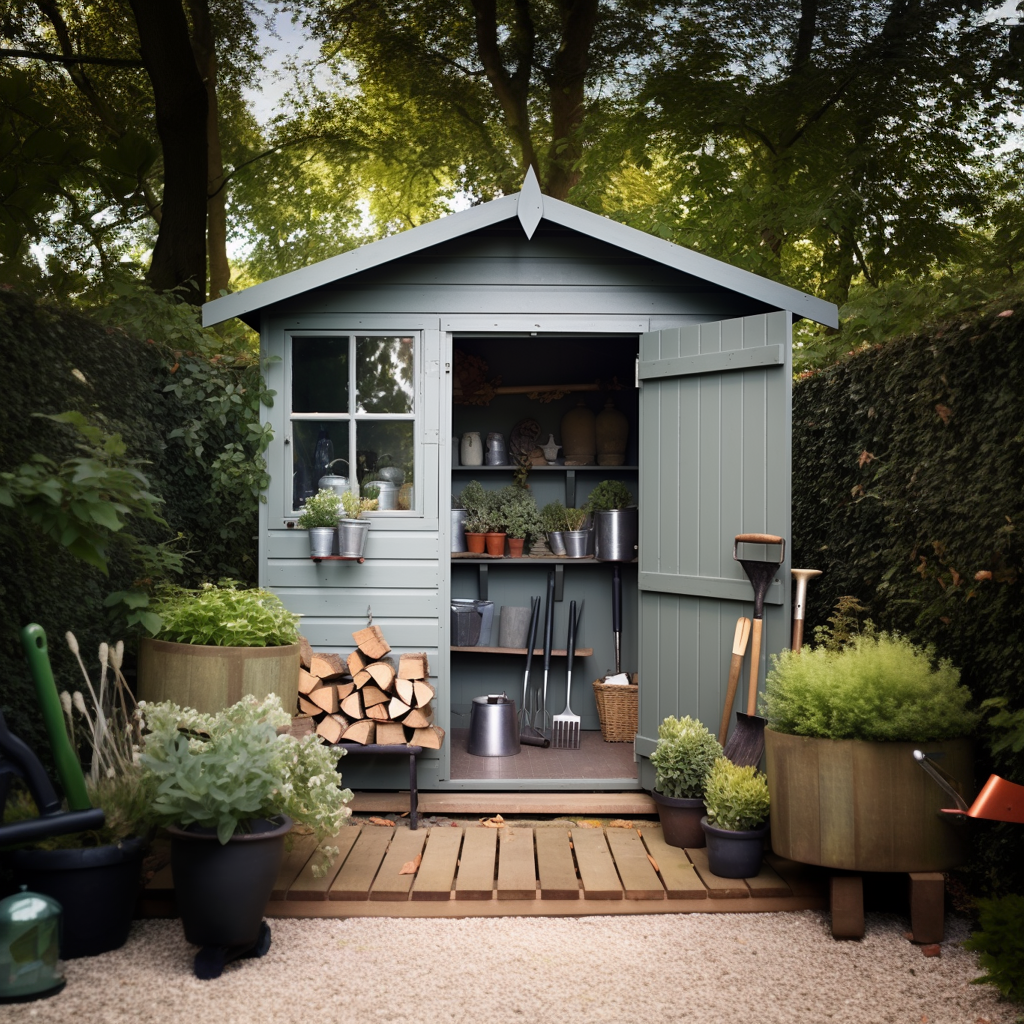
Nothing imbues modern poise and elegance like grey. This also makes it an outstanding neutral shed colour for blending seamlessly amid varied garden palettes or architectural styles. Cool greys complement flowers and foliage in shades of violet, pink and red. Warm greys and beige-greys can help to enhance yellows, oranges and blues within your planting scheme. One of my favourites at the moment is Ronseal’s Slate.
Cheerful Yellows
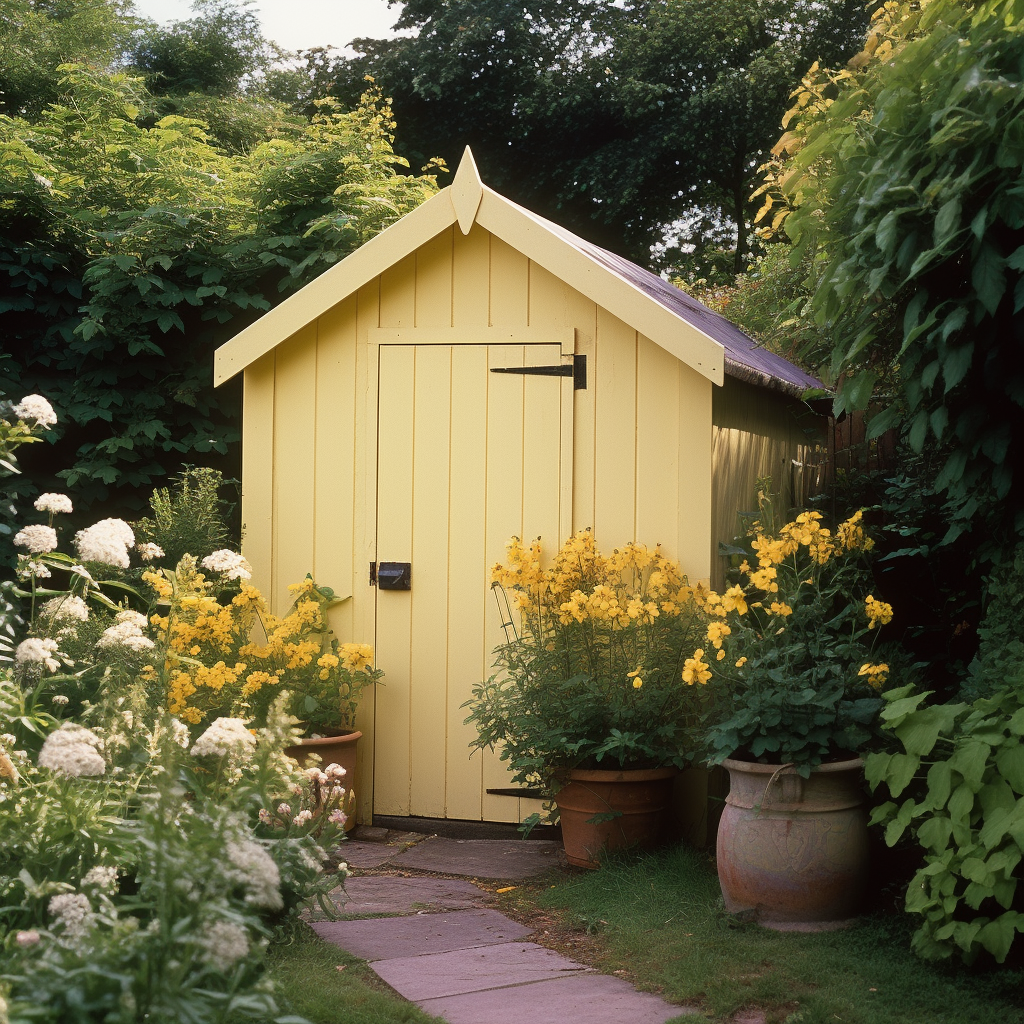
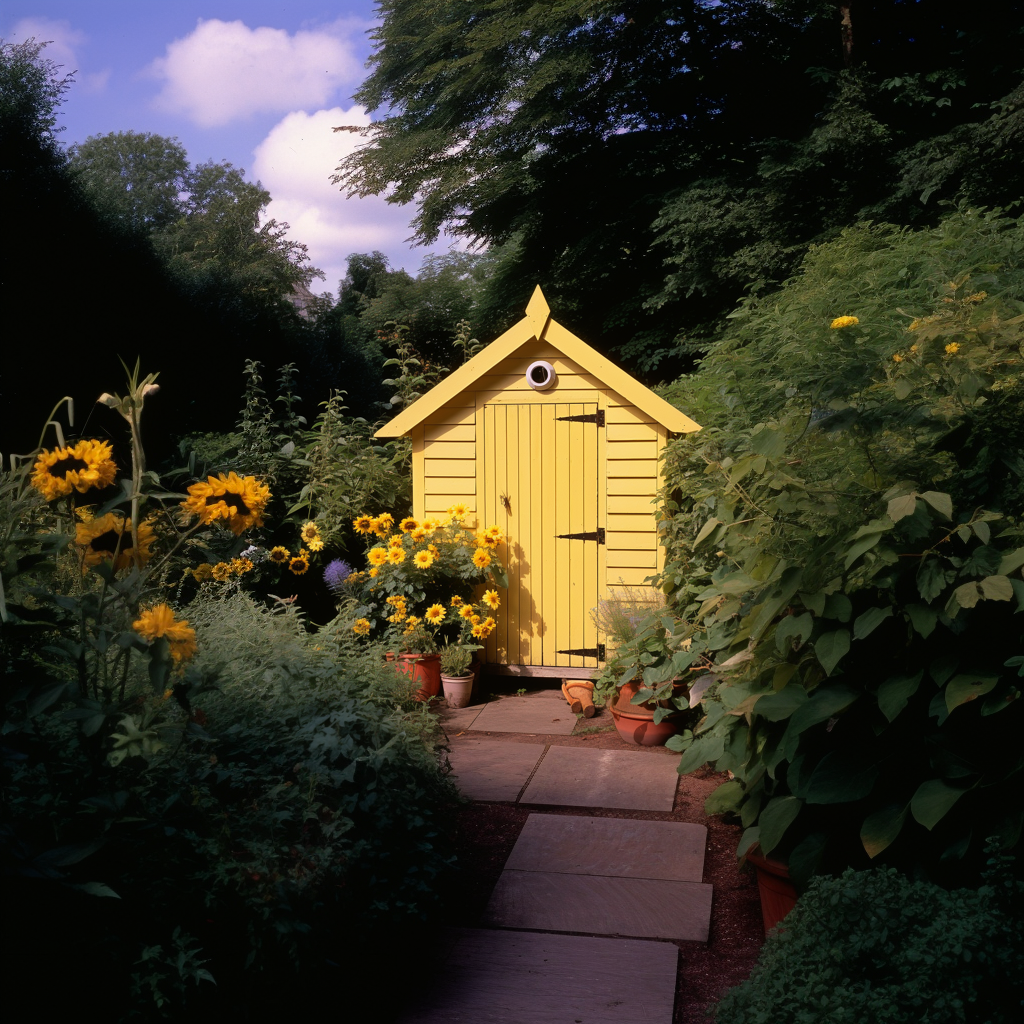
Sunflower, buttercream and mustard yellows feel happy and uplifting while visually opening and brightening shadowy garden corners. They bring out the best in purples, blues and red blooms. Buttery yellows also pair divinely with Robin’s egg blue. Just avoid pairing yellow sheds with pink or orange flowers, which can look jarring. Ronseals Sundial or Elderflower are a couple of stunning yellows to check out.
Sophisticated Blues
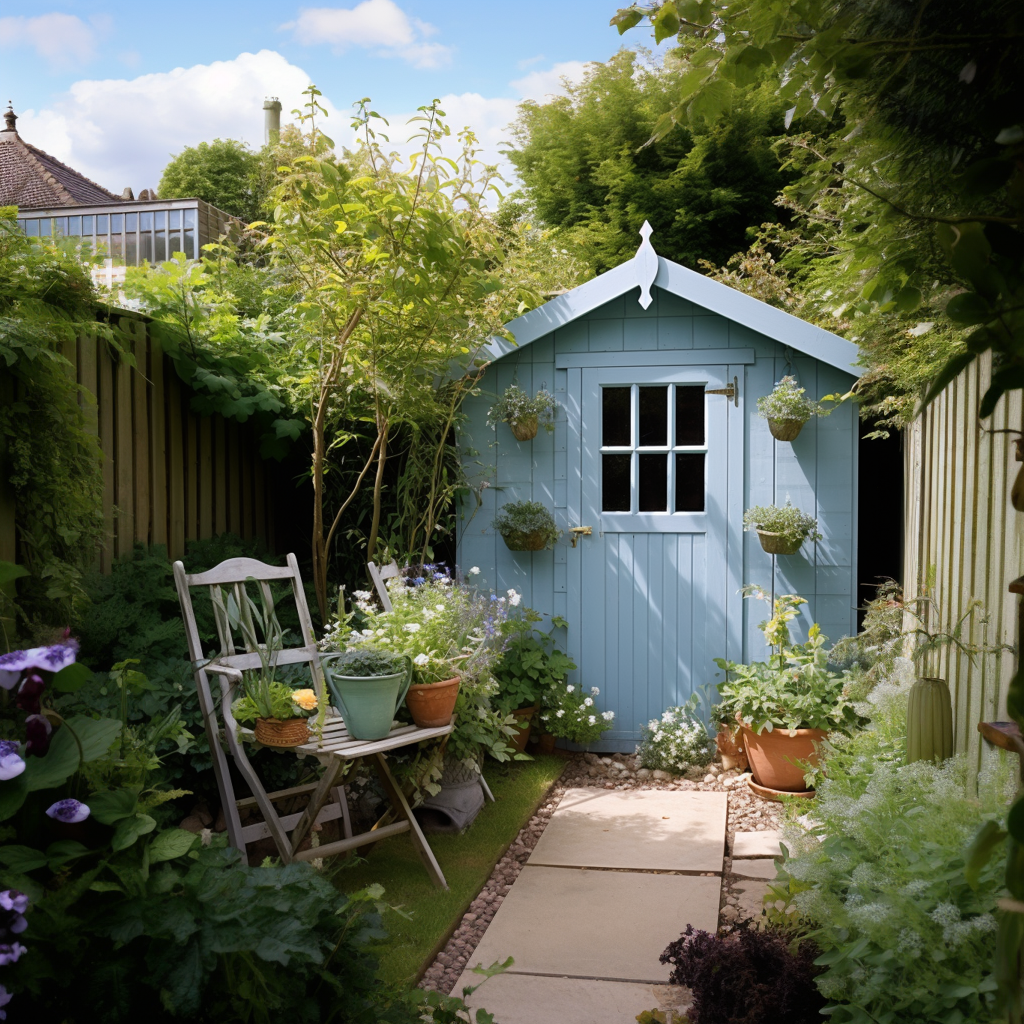
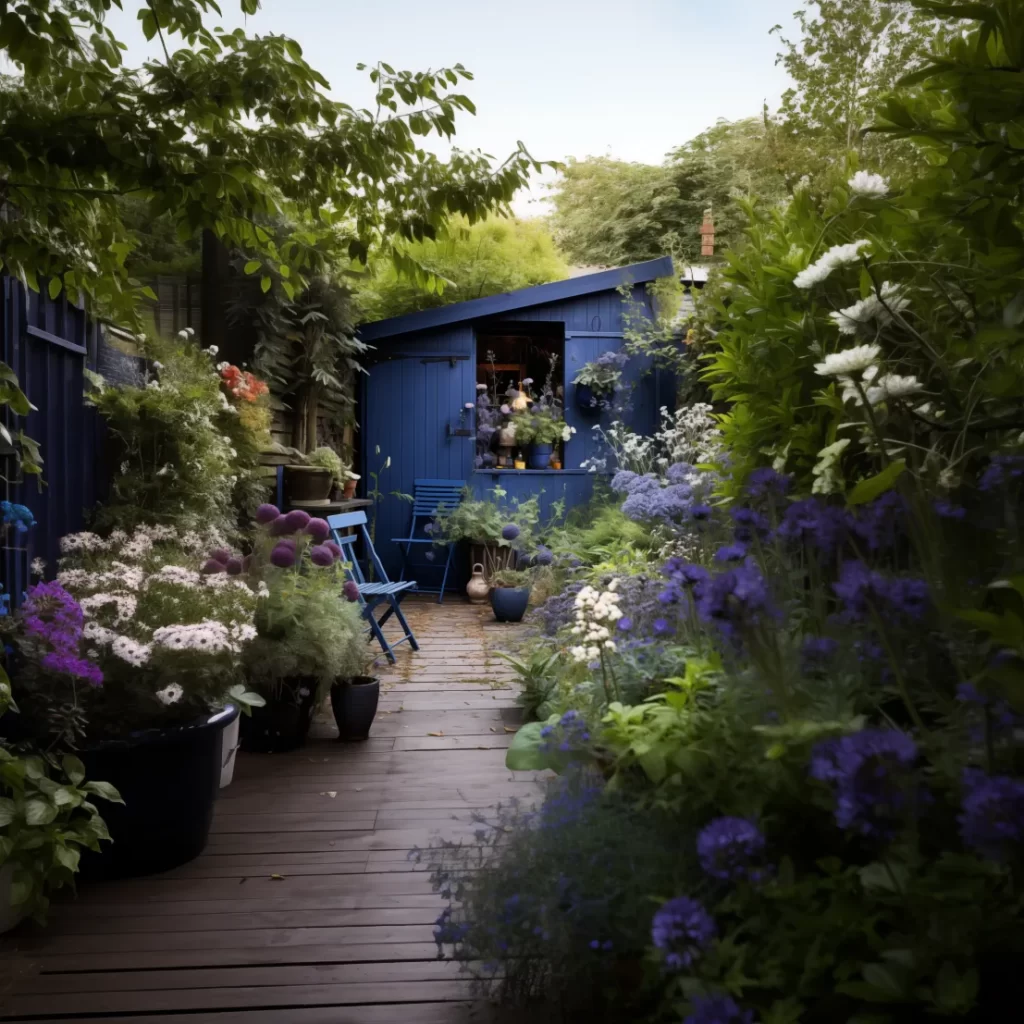
Serene shades of cobalt and navy blue add a touch of regal sophistication to cottage gardens while contrasting beautifully with vibrant red and orange flowers or foliage. Vivid turquoise and teal blues make lively focal points amid greenery. For versatility, choose billowing blue shades that shift intensity with changing light, like Ronseal’s Cornflower or Cuprinol’s Forget-me-not.
Earthy Reds
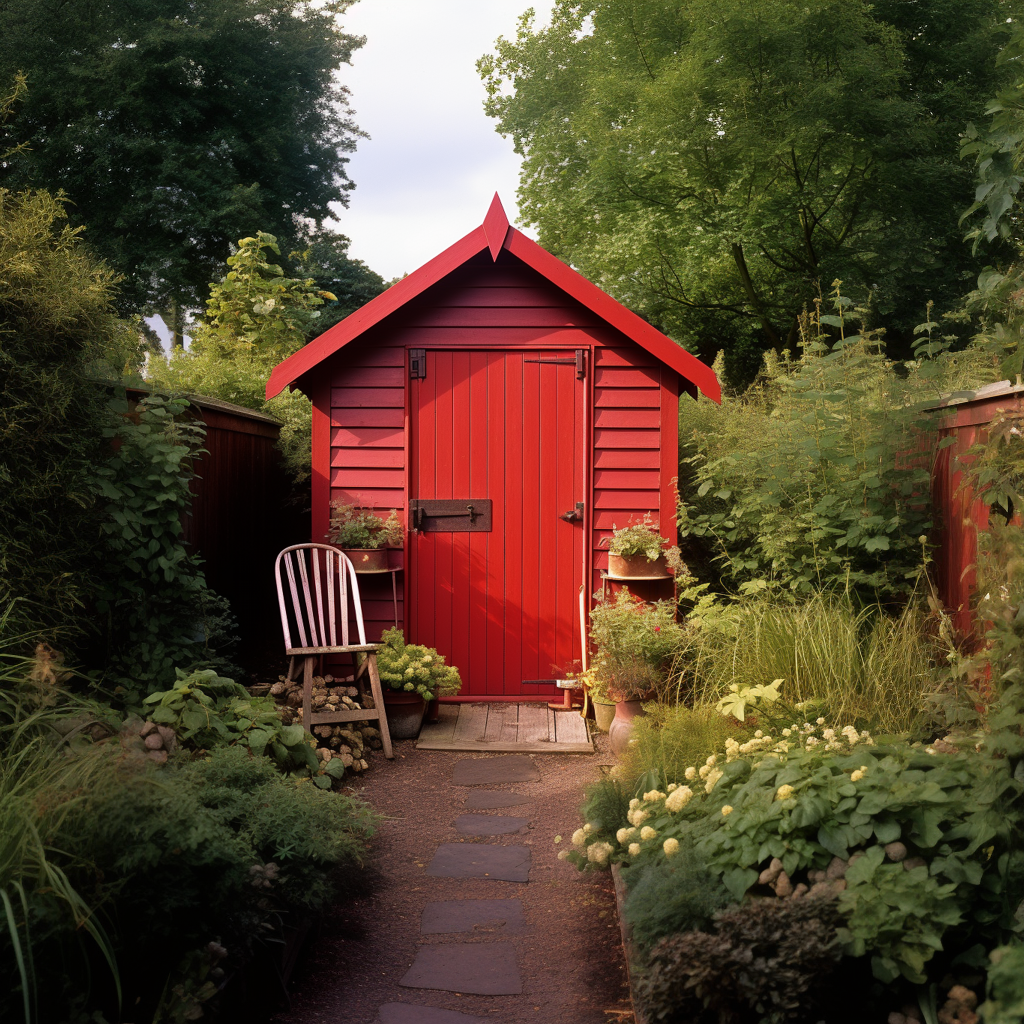
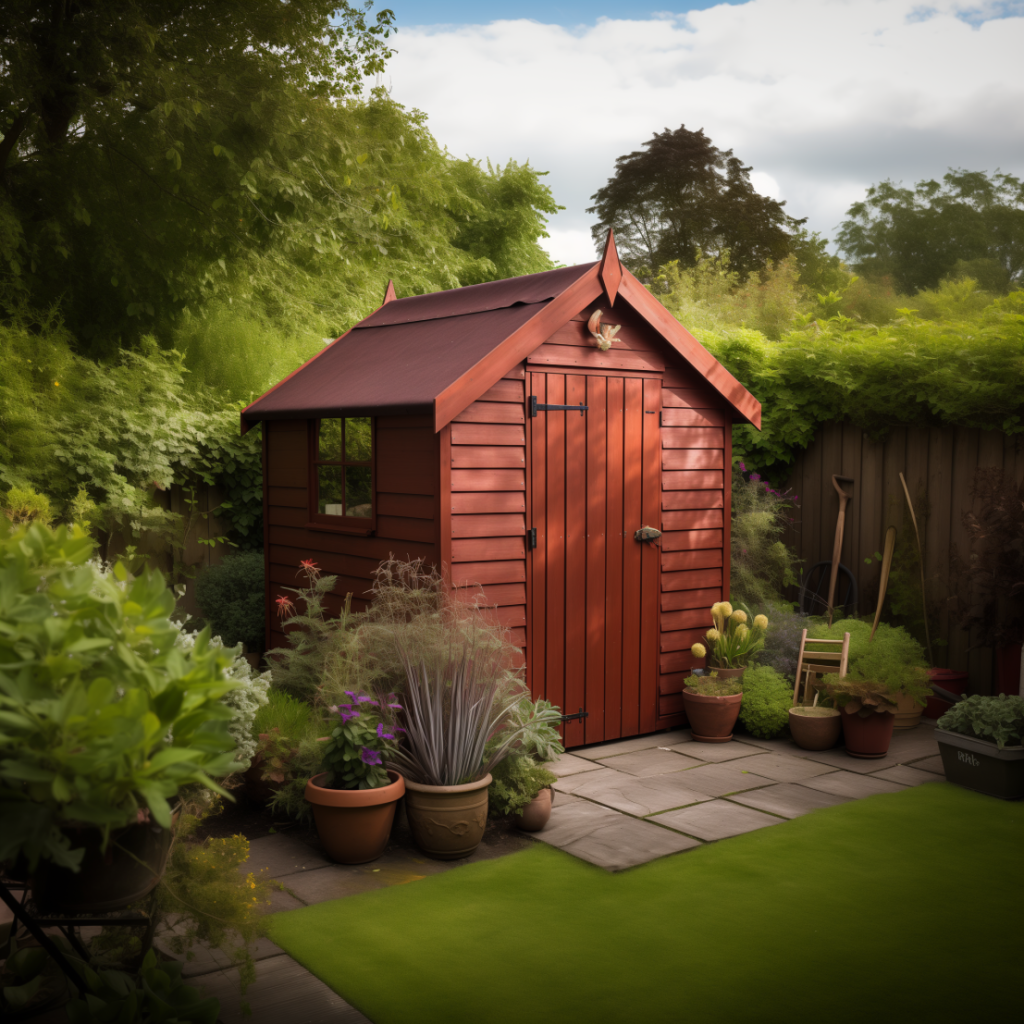
These hues, reminiscent of clay, soil, or terracotta, blend harmoniously with the earth’s palette. Neutral earthy reds have a warm and comforting presence, making them versatile in various settings. In garden aesthetics, these tones act as a bridge between vibrant greens and other natural elements, providing balance and a sense of connection to the surroundings. Check out Ronseal’s Red Cedar or Medium Oak.
How to Paint a Shed for Best Results – Step by Step
You’ve chosen the perfect colour for your unique garden hideaway. Now comes the fun part of prepping and painting your shed to properly showcase its dazzling new hue. Follow these pro tips for achieving flawless, long-lasting results:
1. Clean Surfaces Thoroughly First
Begin by thoroughly cleaning all shed surfaces with an all-purpose degreaser or diluted TSP cleaner to remove soil, grime, sap and cobwebs so fresh paint adheres properly. Pay extra attention to ridding algae, mildew and loose previous paint.
2. Repair Imperfections
Inspect all surfaces and use filler compound to patch holes, dents and cracks for a smooth finish. Replace damaged boards or staining trim pieces. Sand rough areas.
3. Apply Primer
Once surfaces are pristine and dry, apply exterior-grade primer formulated specifically for painting wood or metal. This important step helps new paint stick.
4. Add Two Finish Coats
Allow the primer to dry fully, then apply two finish coats in your chosen colour, allowing proper drying time between coats. Use long paint rollers or quality spray systems for faster application with less drips and splatters.
What Colour Shed Paint Should I Choose? – FAQs
We’ve explored the basics of choosing the perfect shed paint to complement your outdoor space. Here are answers to a few frequently asked questions on the topic:
Q. Can I Choose Non-Traditional Shed Colours?
Absolutely! Part of the joy of DIY garden décor is breaking tired old rules. Just carefully consider existing elements surrounding the shed before diving into an unconventional colour scheme.
Vibrant orange or neon green sheds make cheerful focal points against more subdued grey stone and lush greens. Purple sheds add pop beside analogous red and pink blooms. Even black sheds exude modern edge amid the right settings.
Q. How Can I Make My Shed Stand Out Without Bright Paint?
Adding decorative structural and ornamental elements readily draws the eye while allowing you to retain neutral shed wall colours. Paint decorative window boxes or foundation trim vivid accent shades. Install patterned tin roofing. Use ornamental hardware and wall art. Plant vibrant climbing blooms over entryways. Add township name signs or exterior lighting sconces.
Q. What Precautions Prevent Paint Messes?
It’s messy work painting outdoor structures prone to wind currents. To avoid mishaps:
- Cover nearby surfaces with drop cloths
- Seal house windows and plant foliage
- Paint on days with minimal wind
- Use paint sprayers strategically to evenly coat hard-to-reach areas
- Work top to bottom of walls for fewer drips
Q. How Often Do I Need to Repaint the Shed?
On average, properly prepped and coated wood sheds maintain their dazzling facelift for 5-7 years before requiring new paint, especially when using weather-resistant formulas. Fading and peeling usually begins appearing a year or two later. Touch up paint as needed to maintain beauty and protection between fresh paint jobs.

